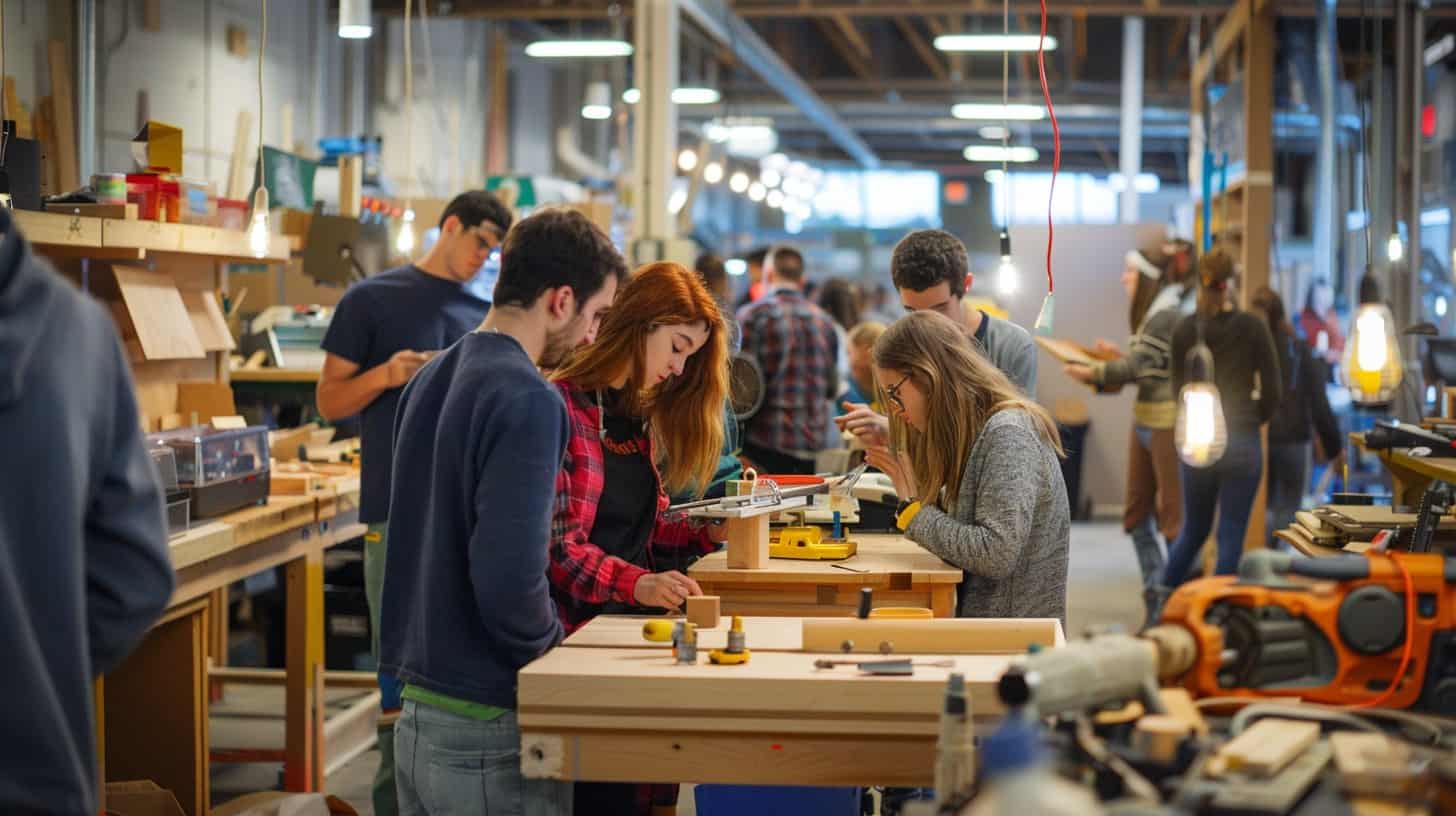Ever feel like creating something with your own two hands? Maker culture is all about that – building, tinkering, and innovating. In this post, we’ll explore the vibrant world of makers and how they’re changing the game in tech, crafts, and beyond.
Get ready for an interesting ride…
Key Takeaways
Maker culture brings people together who love to create, innovate and solve problems using technology and crafts. They work on projects ranging from tech gadgets to homemade clothes.
Makers use a wide array of tools like 3D printers, laser cutters, cloud computing, and hand tools to bring their creative ideas to life. They thrive in makerspaces where they can share resources and learn from each other.
Funding platforms such as Patreon and Kickstarter help makers turn their innovative ideas into reality by connecting them with supporters willing to finance their projects.
Maker culture has inspired media events like Maker Faires and Maker Film Fest that showcase inventions and encourage more people to join the movement.
Despite its positive impact, maker culture faces criticism for being too focused on high-tech projects over traditional crafts, not sharing open-source hardware widely enough, and lacking diversity among participants.
Table of Contents
Defining Makers in the Context of Maker Culture
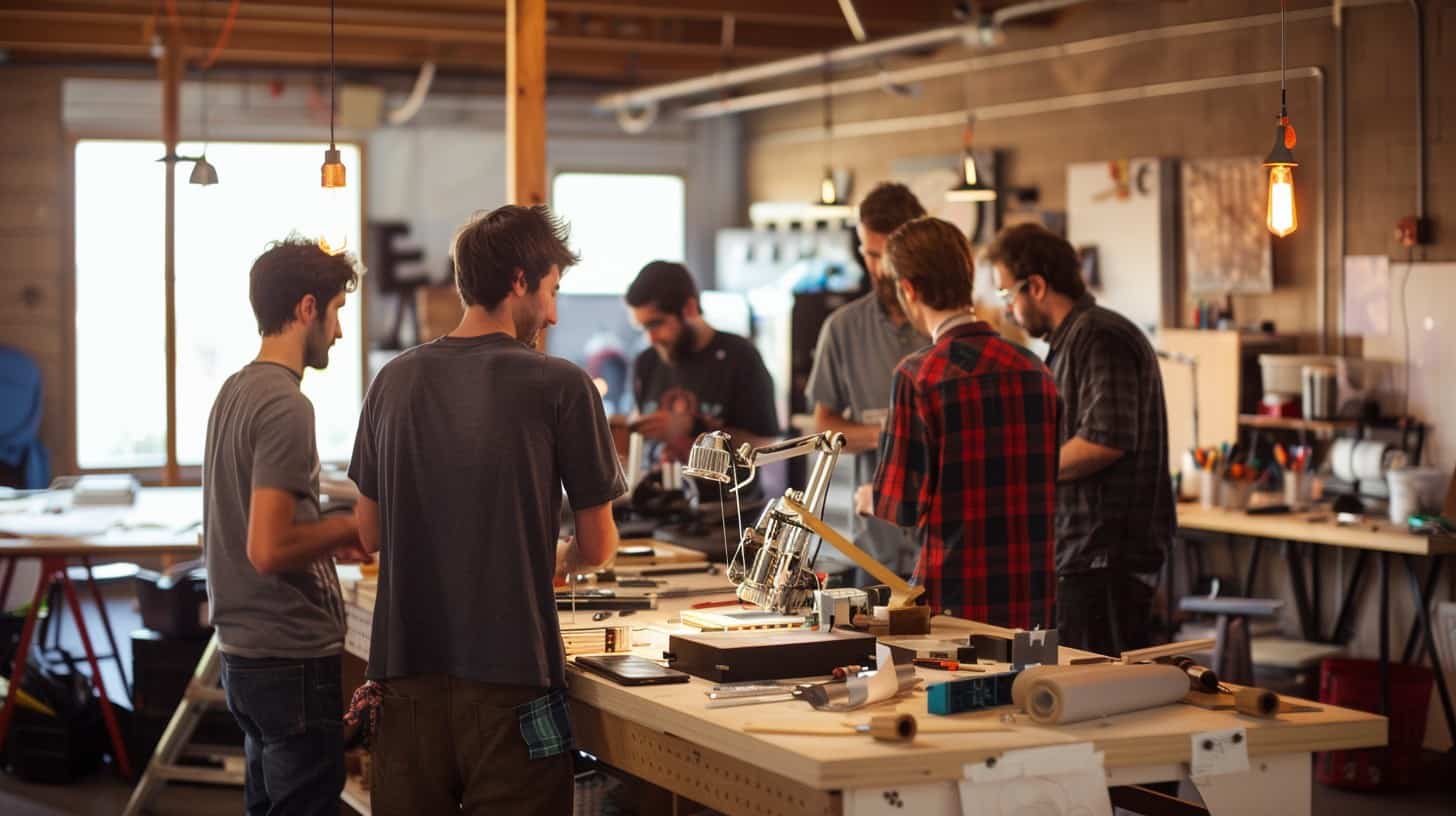
Now diving deeper, makers are the heartbeat of maker culture. They’re a vibrant community that loves to create new gadgets and breathe life into old ones. Picture someone in a garage or at their kitchen table, deeply focused on building something amazing—maybe it’s a robot made of scrap metal or an innovative app that helps people communicate better.
That’s what makers do. They don’t just sit around; they make things happen with tools like Arduino boards for electronics projects and Raspberry Pi for creating digital devices.
This culture is about more than just keeping busy. It’s built on sharing knowledge over the internet and supporting each other through challenges. Makers use open-source hardware to bring their visions to life, allowing them to tweak existing equipment or build entirely new inventions from scratch.
Imagine inventing something cool and then showing someone across the globe how to make it too—that’s maker culture for you! They favor hackspaces where they can gather, collaborate, and learn from one another in person or online.
The goal? To explore tech side hustles, turn cosplay ideas into reality, or even solve real-world problems with handmade solutions.
The Philosophical Emphasis of Maker Culture
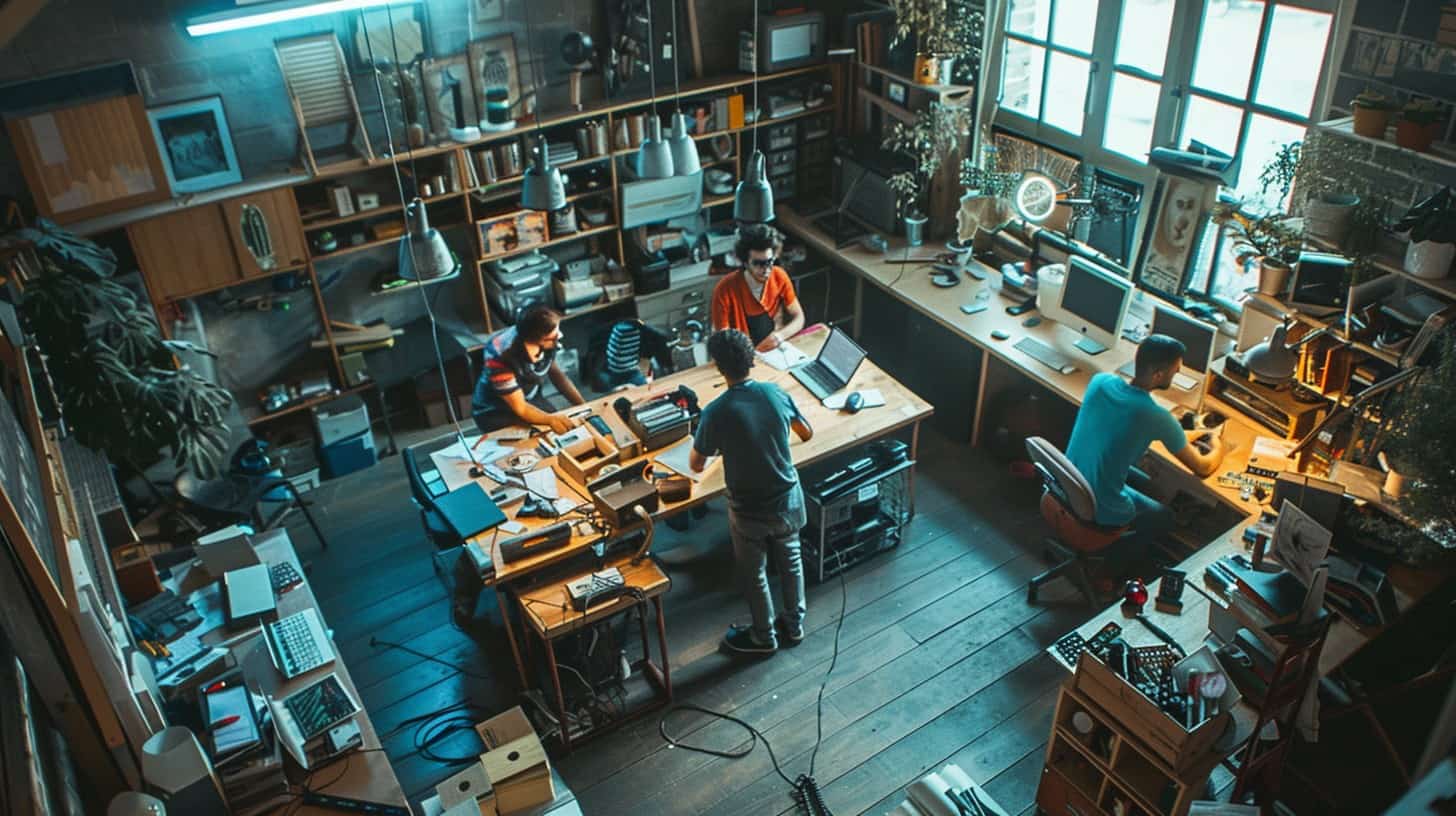
Maker culture is all about rolling up your sleeves and getting your hands dirty. It values learning by doing, tinkering, and experimenting in a friendly setting. Think of it like the old garage projects but on steroids—mixing technology with traditional crafts.
Makers take pride in creating things themselves rather than just buying off the shelf. This DIY spirit fuels innovation and brings people together, crossing fields from electronics to woodworking.
This movement isn’t just fun and games—it’s a bold statement against today’s throwaway mindset. It champions sustainability, health-conscious making, and supporting local cultures through what we create.
By blending arts with sciences, makers are breaking down barriers that once seemed unbreakable. They’re proving that with a little creativity and elbow grease, anyone can change their world one project at a time.
Now let’s step into makerspaces to see where all this magic happens.
Exploring Makerspaces
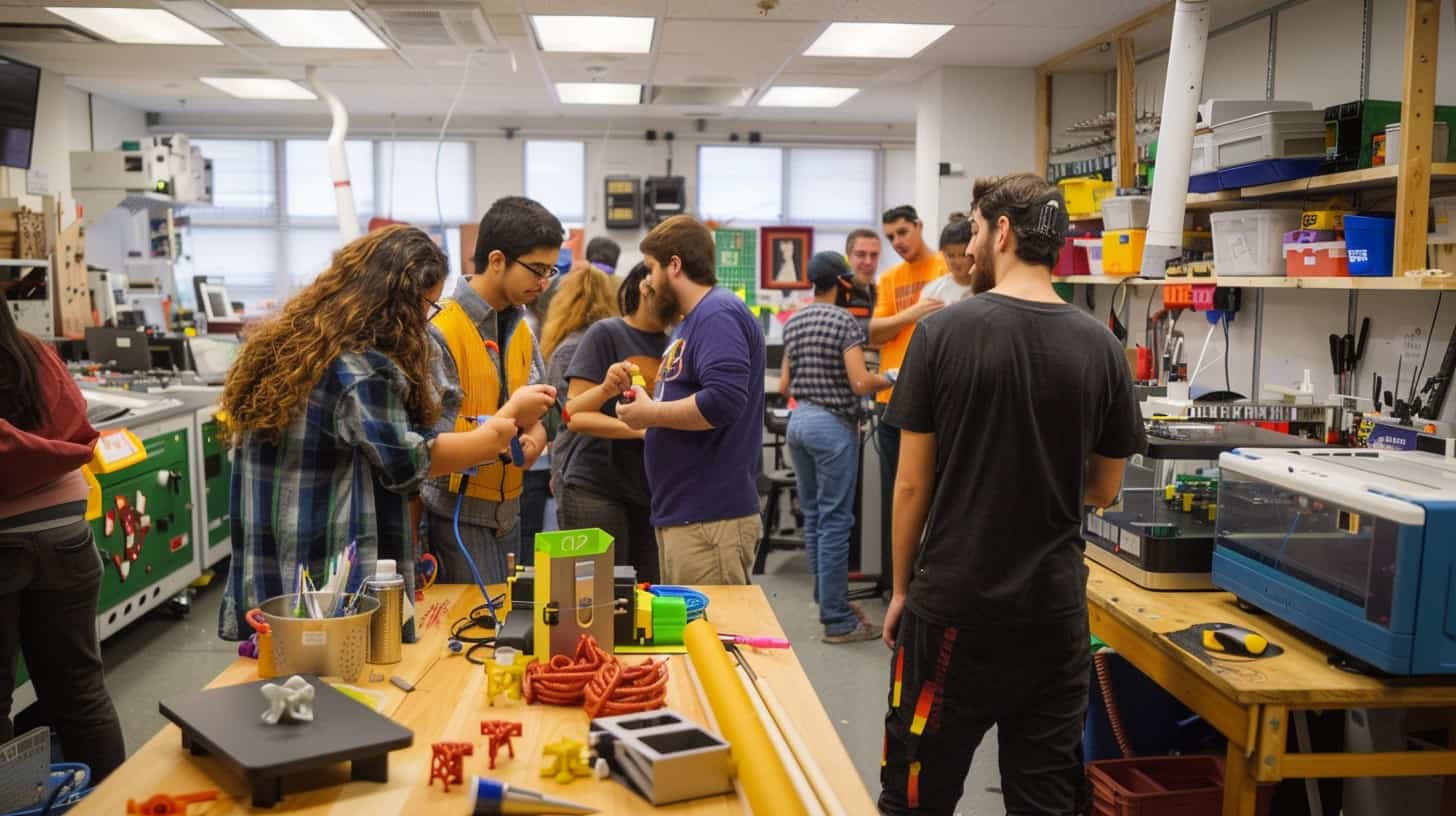
Makerspaces are like playgrounds for the creative mind. Picture shelves lined with 3D printers, laser cutters, and every tool you could dream of. Here, ideas come to life in plastic, metal, and fabric.
Germany and the United States lead the pack with over 100 spaces each where tinkerers meet to share knowledge and gear up for their next big project.
These hubs aren’t just about using fancy tools; they’re a meeting ground for minds that think outside the box. From crafting digital gadgets to sewing costumes, makerspaces push innovation by providing access to high-speed internet and cutting-edge technology tools like microcomputers and fabrication laboratories (fab labs).
Ready to dive into what tools makers use? Let’s get our hands dirty in the next section.
Tools and Hardware Used by Makers
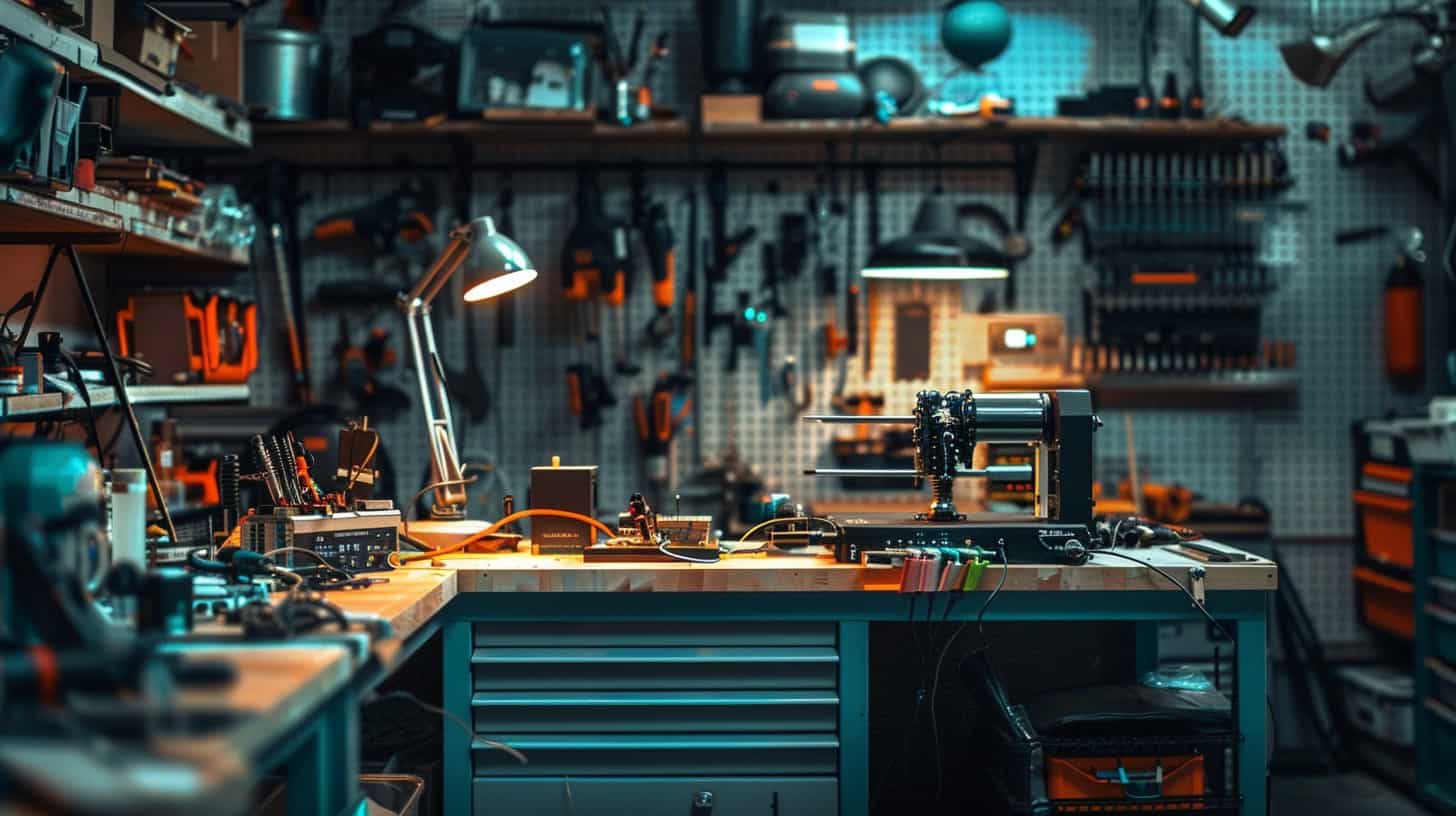
Makers use all sorts of gadgets to bring their ideas to life. From cloud computing that lets them store and share projects online, to CMM machines for precise measurements—tools are a big deal.
Plus, if you get trained by industry experts, you can really kick things up a notch!
Cloud Computing
Cloud computing is like magic for the maker movement. It lets people work together, share ideas, and make things, no matter where they are. With sites like Appropedia and Thingiverse, you can find a blueprint or a guide for almost anything you want to create.
And let’s not forget GitHub – it’s kind of a big deal. It helps makers keep track of their changes and work with others easily.
Then there’s the power of having your head in the clouds, literally! Working on projects becomes simpler when you can store all your info online using cloud-based services. This means you can access your designs from anywhere – be it a cozy café or a bustling makerspace.
Plus, with open hardware and software getting along so well in the cloud, creating new gadgets or improving old ones has never been easier. The sky really is the limit!
Digital Fabrication Tools
Leaping from the vast skies of cloud computing, let’s land on the solid ground of digital fabrication tools. These tools are like a Swiss Army knife for makers—packed with features to cut, carve, and create.
Think laser cutters that slice through metal like butter, CNC machines dancing across wood to shape our wildest designs, and knitting devices weaving threads into cozy blankets.
Now, imagine your computer as a wizard’s book filled with spells. Digital design software—Solidworks, Autodesk, Rhino—are those spells that turn ideas into reality. Add in some magic dust with desktop 3D printers churning out everything from plastic prototypes to shiny metal parts.
Don’t forget about those small but mighty wizards—the Arduino and Raspberry Pi—that control gadgets big and small. Together, they make an unstoppable team for any project you dream up.
Hand Tools
Makers love to get their hands dirty, and nothing does the job better than good old-fashioned hand tools. Screwdrivers, hammers, and saws bridge the gap between tradition and innovation in maker culture.
They allow for precision that machines can’t always match. Think of them as the unsung heroes crafting sustainable futures from scratch—no plug required.
In this world where digital meets physical, these tools aren’t just about hammering nails or tightening bolts. They’re part of a bigger picture: using less to create more. Makers worldwide are turning to chisels and wire cutters to bring their wildest ideas to life, proving that sometimes the most advanced technology is right in your toolbox.
Whether carving wood or wiring circuits, makers count on these essentials every step of the way.
Different Types of Making
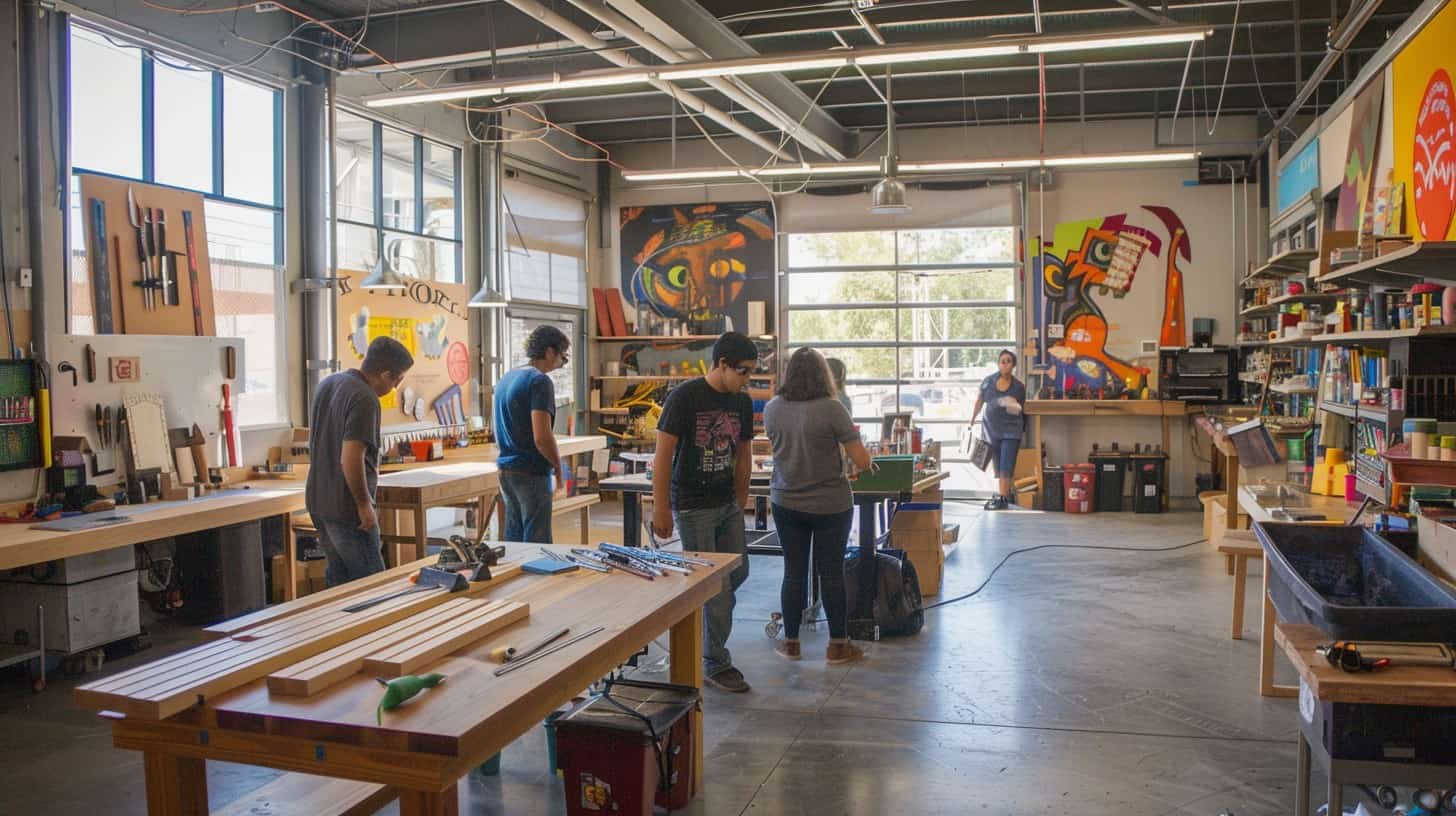
Making comes in all shapes and sizes. From crafting your own clothes to building gadgets, the possibilities are endless.
Amateur Scientific Equipment
Makers love to get their hands dirty with science projects, and they’re not afraid to try something new. They use 3D printers and digital fabrication tools like kids in a candy store.
Imagine turning your garage into a mini lab where you can bring any idea to life. That’s the power of having open-source hardware at your fingertips. You could be brewing beer one day and building a robot the next.
This passion for DIY scientific gear isn’t just about fun; it’s about breaking barriers in food production, urban farming, and even making organic cosmetics from scratch. With these tools, makers are changing the game, showing that you don’t need a fancy degree or an expensive lab to innovate.
It’s all about rolling up your sleeves and diving into experiments—failures included. After all, every mistake is just another step towards creating something amazing.
Clothes
Clothes making is a big deal in maker culture. It’s not just about stitching fabric together—it’s an art form. Think of it like cooking, but instead of ingredients, you have threads and textiles.
And just like any good meal can make someone’s day, the right outfit can turn heads and spark conversations. DIY enthusiasts often dive into clothes making with both feet. They’ll create everything from everyday wear to elaborate costumes for cosplayers.
The process involves tools that range from simple needles to sophisticated digital fabrication machines like sewing robots and textile printers. And here’s where things get exciting—makers mix traditional skills with today’s tech to cook up something extraordinary.
Imagine designing your dress on a computer and then bringing it to life with a 3D printer! This blending of old and new is what makes the maker movement so special when it comes to fashioning garments.
It shows how our creativity knows no bounds, especially when we’re armed with a needle or a CAD program.
Musical Instruments
From sewing their own clothes, makers jump into crafting their own musical devices. This leap shows how versatile they are. Makers can create anything from simple flutes to complex electronic synthesizers.
They use tools like 3D printers and soldering irons to bring their sonic ideas to life.
At the Maker Faire, these musical innovations take center stage. Here, creativity knows no bounds. Major companies even take notice, supporting these inventors’ ingenuity. From string instruments to digital sound machines, if you can imagine it, you can make it.
Vehicles
Car tuning and switching up gas guzzlers for electric rides aren’t just cool projects—they’re a big part of maker culture. Imagine taking an old clunker and transforming it into a sleek, energy-saving machine.
That’s innovation at its best, folks. Makers dive right into these auto makeovers, tweaking everything from the engine to the exhaust, proving that with some creativity (and maybe a few wrenches), anything’s possible.
Now, let’s talk about how makers play hero during crises. Remember those days when masks and ventilators were as hard to find as a needle in a haystack? Well, makers worldwide stepped up! They used open-source designs to create lifesaving equipment like ventilators and face shields—right from their workshops.
This wasn’t just DIY—it was do-it-for-everybody. Whether it’s through cutting-edge technology or simple hand tools, making vehicles or medical gear; these innovators show us that if you can dream it, you can probably build it—and possibly save the world while you’re at it.
The Role of Funding Platforms in Maker Culture
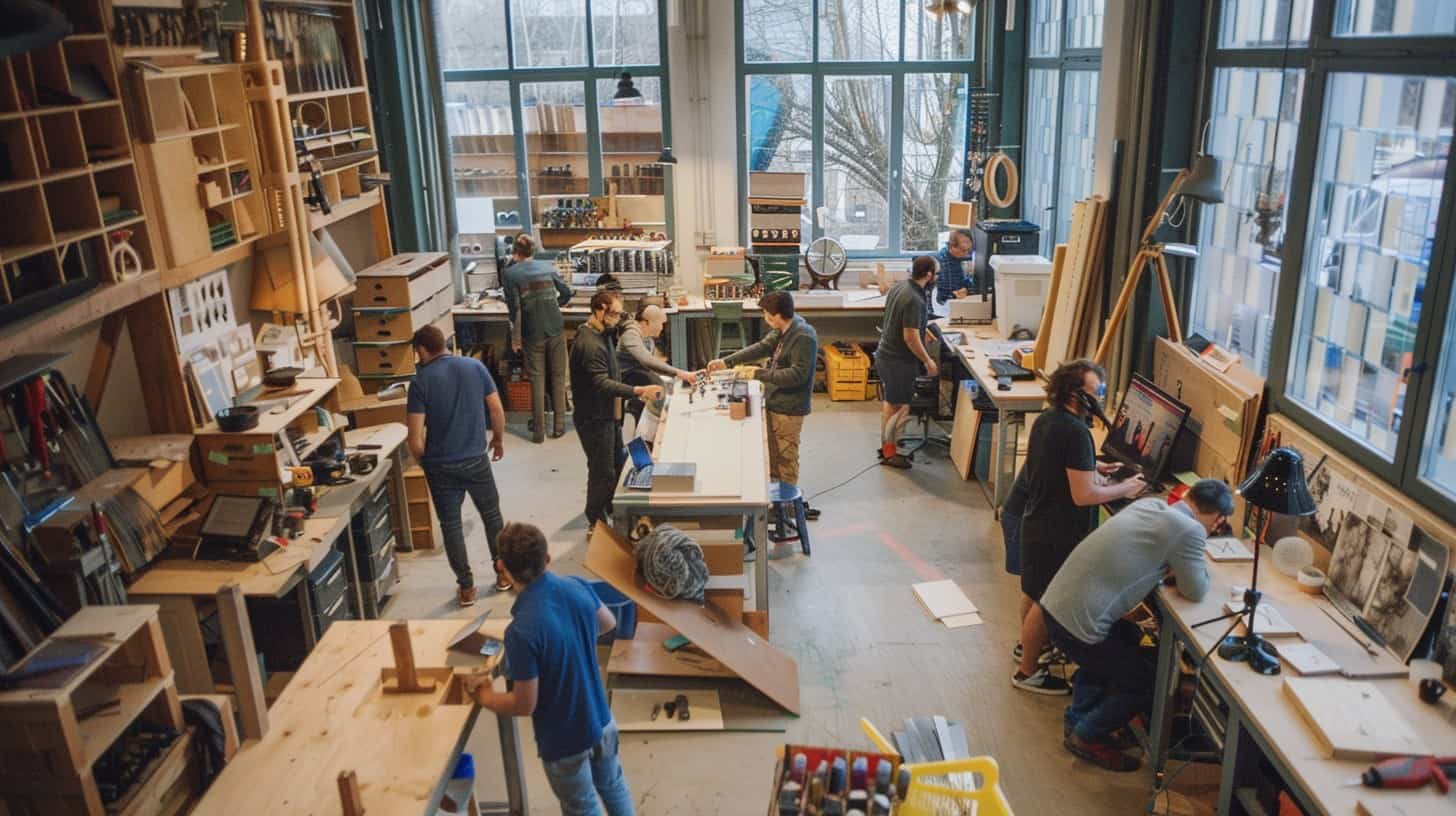
Funding platforms like Patreon and Kickstarter have turned the tables for makers around the globe. They open doors to money that helps bring creative projects to life. Think of it as a digital lemonade stand where instead of selling drinks, creators showcase their inventions or art.
Supporters then chip in, turning visions into reality.
These platforms are more than just cash registers. They’re community hubs where makers meet backers who believe in their work. It’s a place for stories to unfold, with each donation pushing the narrative forward.
Sharing progress on social media gets the word out, drumming up even more support. In a way, these sites stitch together networks of people eager to see innovation thrive—making big dreams achievable one dollar at a time.
The Impact of Maker Culture on Media
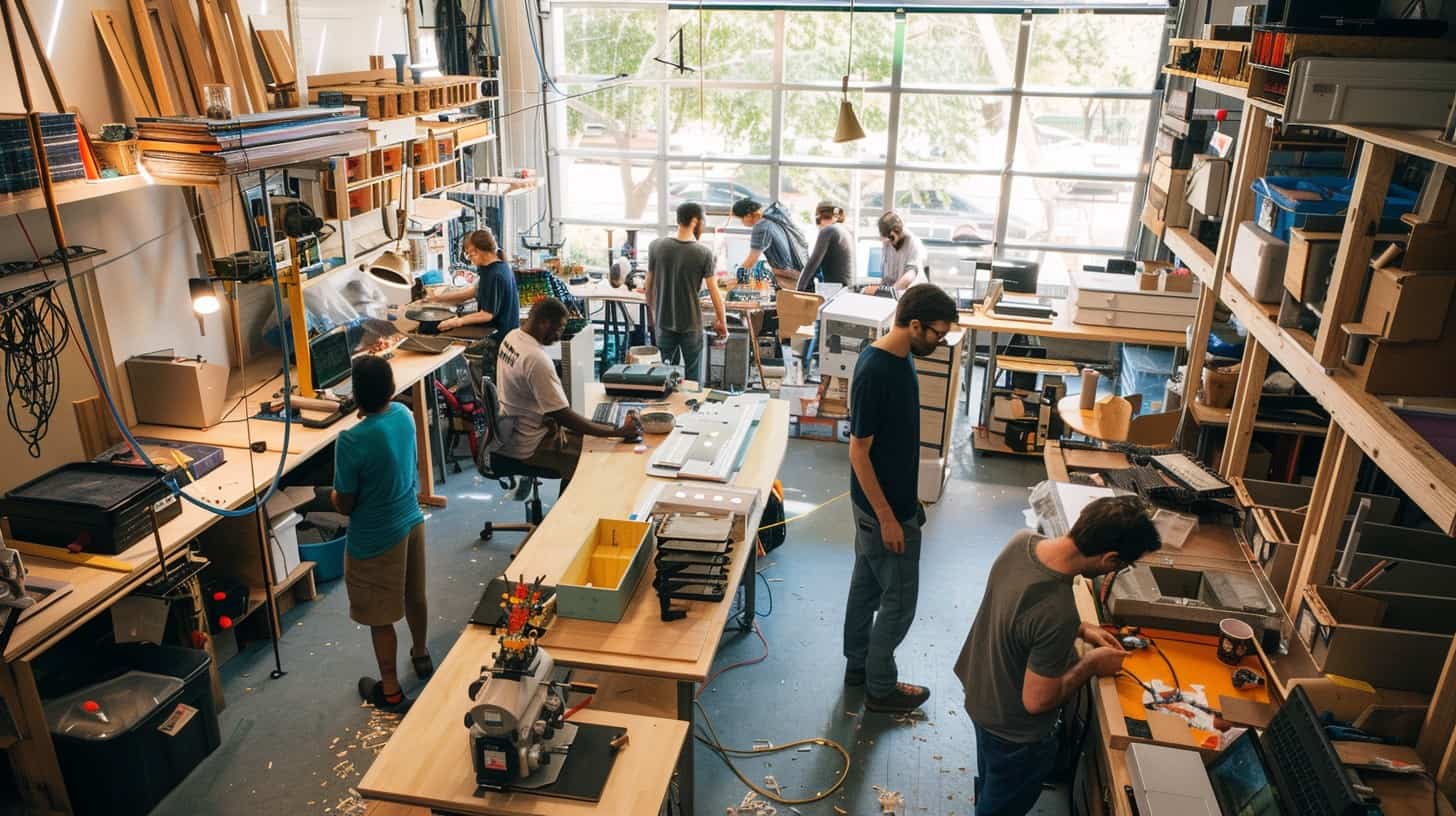
Maker culture has taken the media by storm, sparking new shows and festivals that celebrate DIY creativity. Think of Maker Faires and Maker Film Fest; they’re like big parties where everyone shares their love for building cool stuff.
Maker Faires
Maker Faires light up cities worldwide, starting back in 2006. They’re like carnivals for the brainy and crafty crowds, where innovation meets fun. Picture tents brimming with robotics, 3D printing demonstrations, and DIY electronics that spark imagination.
These events are big deals—over 280,000 people joined the party last year alone.
Not just for tech wizards or engineering enthusiasts, Maker Faires welcome everyone. Kids get hands-on experience with science and creativity, while adults discover new hobbies or even career paths.
Sponsored by Make magazine, these fairs serve as a vibrant platform for sharing ideas under the sun of open-source movement and hacker culture. Next up? Let’s dive into how maker film festivals add another layer to this creative community’s impact.
Maker Film Fest
Lights, camera, action! The Maker Film Fest is where creativity meets the big screen. It’s a place to watch stories about inventors turning dreams into reality. From 3D printing masterpieces to robots dancing, these films inspire us all.
They remind us why we tinker and create.
Ever wondered how a piece of tech can change lives? These films show it—up close and personal. They take you behind the scenes of garages and workshops around the globe. You’ll meet people who believe in making things better, one invention at a time.
Get ready for an adventure that might just spark your next big idea!
Criticisms of Maker Culture
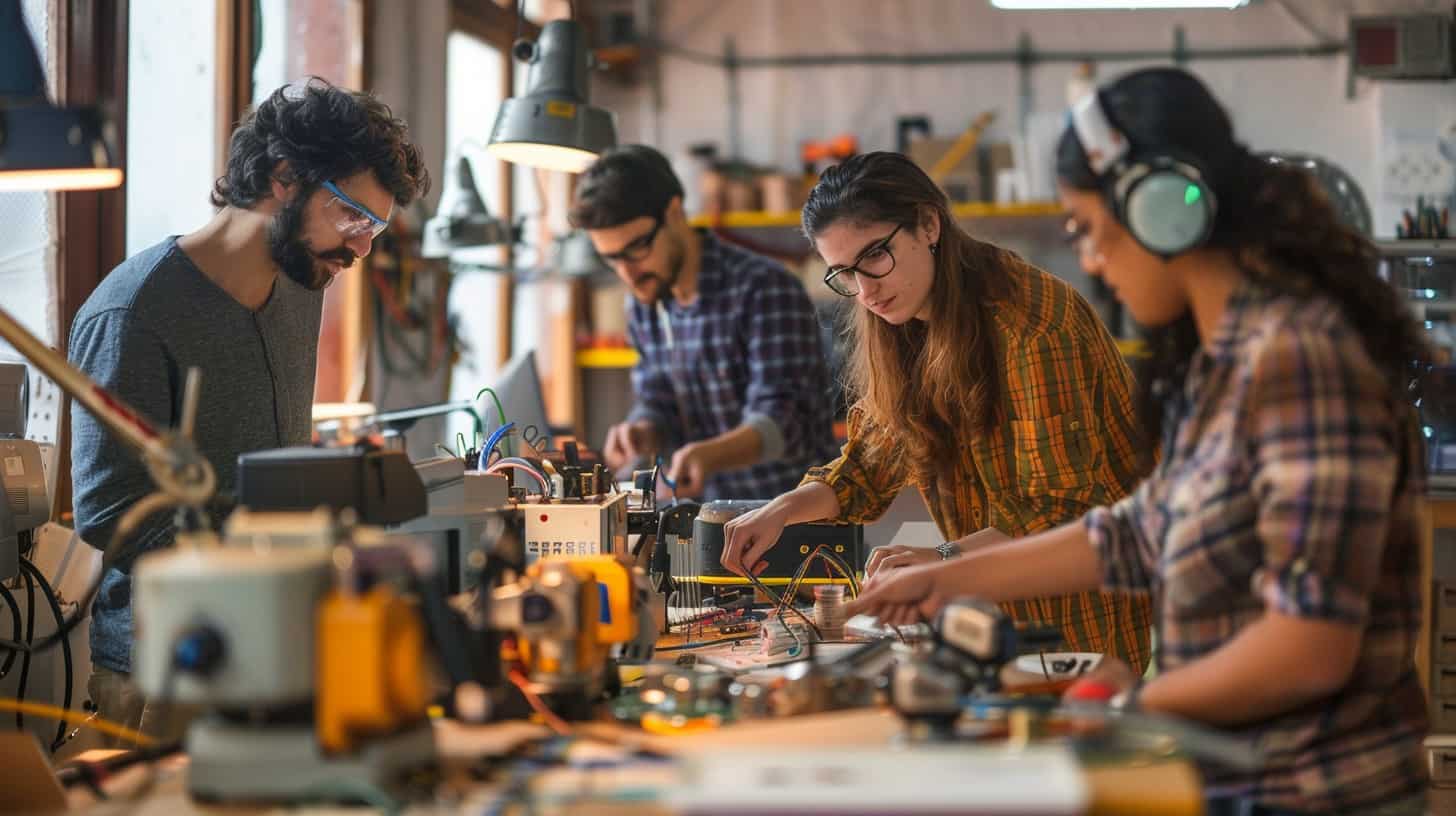
Maker culture has hit a few bumps on its journey to shaking up the world. Critics say it’s too wrapped up in tech gadgets and gizmos. It’s like being at a party where everyone only talks about their smartphones.
This focus leaves out a big chunk of creative crafters who don’t rely on wires or code. Also, the open-source hardware that gets maker hearts racing? Some folks argue we’re not sharing these treasures as much as we could be.
It’s a bit like finding an amazing secret spot but forgetting to tell your friends how to get there.
Despite aiming for inclusivity, maker faires have missed inviting everyone to the table. African American and Hispanic families are rare sights at these gatherings, pointing towards a gap bigger than just interest levels – perhaps it’s something deeper within our approach or outreach efforts needing serious tweaking.
Then there’s this dream of democratizing creation; yet some whisper we’re more caught in celebrating lone geniuses than really flinging open the doors wide for all walks of life to rush in with ideas aplenty.
Plus, traces of old-school rugged individualism seem to creep back, nudging aside true collaborative spirit sometimes vital for innovation to bloom—a real challenge if we’re committed to changing how society sees making and learning together.
FAQs About Maker Culture
Who are the “makers” in maker culture?
Makers are creative folks who dive into DIY projects, from arts and crafts to tech gadgets. They’re like kitchen scientists or garage inventors, always cooking up something new.
What’s so cool about open-source in maker culture?
Open-source is like sharing your secret recipe with the world. It lets everyone tweak, improve, and share ideas back. It’s all about teamwork across the globe!
How do makers shake up traditional manufacturing?
Makers use tools like 3D printers and CNC milling to make stuff right from their homes or local maker spaces. They’re showing big factories that you don’t need a mountain of money to create awesome things.
Can anyone become a maker, or do you need fancy degrees?
Nope! You just need curiosity and the urge to tinker. Whether it’s circuit bending or sewing your own clothes, if you love making things, congrats—you’re a maker!
Why is maker culture important for learning?
It turns learning upside down! Instead of just reading about science or math, makers get hands-on experience by building and experimenting—turning “what ifs” into “aha moments”.
How does being a part of this movement help our planet?
Maker culture loves fixing things rather than tossing them out—hello upcycling! Plus, by creating sustainable solutions at home (like open-source ventilators), makers prove that small actions can have huge impacts.
